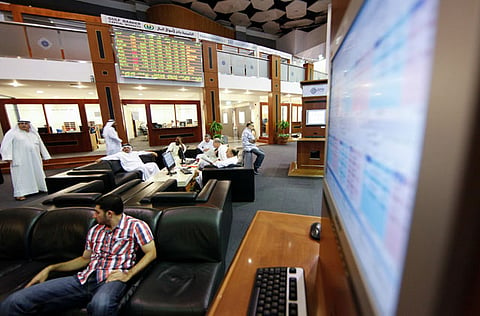Bonds strengthen while the music plays on
For now the Mena region and GCC are benefiting from the world ‘muddling through’

We are somewhat used to the idea of the Mena region and GCC being on the periphery of international investor horizons, and therefore having a vulnerability to volatile funds flows.
The Gulf’s absence still from key MSCI indices, the retreat of European funding from regional project plans, and restrained foreign direct investment all attest to that notion.
However, that basic premise may now be in some doubt.
It’s already an investment theme that emerging markets have begun to be viewed more positively relative to the past, and not merely in cyclical terms.
Today there is reason to perceive an underlying combination of financial solidity alongside still outstanding growth prospects (based on developmental catch-up if not policymaking prowess), while the developed economies tread water at best.
Notably in Asia, that evolution would logically be the result, in very broad terms, of (i) the improving comparison itself against ailing US and European examples, (ii) a certain critical mass of ongoing capitalist development having been established and proving itself, in the likes of China, India and beyond, and (iii) the accumulated net worth and ongoing income returns, and therefore financial cushion, that are so vital amidst a deleveraging global economy.
Thus the shifting sentiment, and analysts have taken note.
In their latest regional focus Standard Chartered prefaced their market assessment with the observation that the GCC “has traditionally been viewed as a ‘high-beta’ market, one that outperforms in good times and underperforms in periods of risk aversion”. Yet, while the Dubai World debt restructuring episode and Arab Spring have been factors to reinforce that impression, in fact “today international investors recognize the defensive credentials of the region”, owing to the strength of the Gulf’s finances, reflected both in $100 oil prices and official reserves rising through the 1trn dollar mark.
NCB’s last quarterly research, while acknowledging the turbulence imparted by the eurozone, was moved to say that regional trading and issuance conditions have been “marked by considerable resilience, reflecting the emerging consensus that the GCC is now one of the relatively safe havens in the global financial market.”
Relatively, mind you. There’s little that can be truly relied on in this troubled environment. As investment house GIC has identified, it has been the better quality credits that have been favoured. In its recent monthly offerings it has remarked that among Gulf assets the market’s preference for ‘low-beta’ has been “very evident”, and suggested that investors keep to reduced durations “given the present global uncertainty”. Confidence has its limits.
Still, a platform is being established. NCB chief economist Jarmo Kotilaine told me this week that whereas risk obviously remains, considering past periods of market stress, “even the most challenged jurisdictions, such as Dubai, have been seen to have dealt with the situation quite well”, implying that a corner has been turned.
Worldwide bonds to some extent reflect the lead set by US Treasuries, however, and that’s a market distorted by recurrent Federal Reserve stimulus, an artificial boost to the party spirit that at some point will have to be withdrawn, threatening a sobering snap back in prices and counterpart yields. Wouldn’t all other bond markets be prone not only to that potential weakness but to an amplified reaction by dint of marginal status, I wonder?
Kotilaine plays down that threat. “I don’t see that being a near-term risk for the foreseeable future,” he suggests. “I rather think the music will stop, but somewhere down the line, a year or more, by which time the GCC’s relative attractiveness will have increased further, with the oil market continuing to be tight.”
That’s a key conundrum right now. Benchmark bond prices reflect a common retrenchment, at odds with the idea of sustained economic recovery. For now the Gulf is benefiting from the world ‘muddling through’, in the window between deflation and inflation. The proverbial $64 thousand dollar question is how long that’s going to last.
Sign up for the Daily Briefing
Get the latest news and updates straight to your inbox

